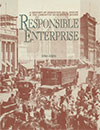Collapse of the Land Boom

World War One marked a basic and inevitable adjustment in Edmonton's economy unrelated to the events in Europe. This change was noted by H. M. E. Evans, the chairman of the recently established Edmonton Board of Public Welfare, in his first annual report. The economic expansion, he noted: "could not last and (it) showed unmistakable signs of passing even before the outbreak if the War. Therefore, while the sudden collapse in the autumn of 1914 forced the matter urgently on our attention and the operations of the Board for that year were mainly in the nature of emergency relief measures, the problem was inevitable and will be permanent."
The collapse of the urban real estate market left an oversupply of land available for development. This problem was not solved by the war or the postwar recovery during the late 1920s. From 1920 to 1938, the city laid out on paper during the boom was dismantled.
This meant many subdivisions such as Mayfair Park (where Hawrelak Park is now) were cancelled. Plans for the development of a civic centre were also abandoned.

The legacy of the pre-World War One railway boom was that Edmonton was now a city covering 40.8 square miles (105.67 square km) or 26,342 acres (10,668.51 hectares) of which only 4,730 acres (1,915.65 hectares) or 18 percent was serviced with water and sewer lines. The city was committed through annexation agreements to extend water and sewer services to much of the undeveloped land in the suburban zones. The suburban zones, although divided into blocks and lots, were basically agricultural land. Yet its assessed value before 1921 was inflated from an average of $100 per acre ($250 per hectare), which would have been reasonable, to $274 per acre ($685 per hectare). Because of the financial stringency of the time, it became very difficult to collect the taxes that were levied on the lots in this area. By September 1915 the solvency of the city was threatened. The city responded with a massive tax sale of much of this property.
One obvious effect was the drastic drop in the number of real estate firms listed in the Henderson's Directory, which went from a peak of 333 in 1914, to 101 in 1920. The Radial Realty Co., whose reason for being had been the promotion of the outside subdivisions, did not survive.
Lou Weber's company survived by diversifying into insurance. He was joined by his brother N. Roy Weber in 1915 to establish Weber Brothers. N. Roy Weber had originally come west in 1911 but had settled in Calgary where he was employed by the Winnipeg based Walch Land Co. He rose to become manager and then exclusive agent of this company before it went out of business during the First World War. The partnership between Lou and Roy proved to be very successful, with Roy being primarily concerned with real estate while Lou handled the insurance side. The company dealt in fire insurance at first but branched out into other lines, particularly automobile insurance.
In 1923 the brothers incorporated the first automobile finance company in the province, the Edmonton Credit Co.
Other brokers, such as Ed Molstad who had been involved with the Fort George Land Co., also switched to other endeavours such as insurance. In 1916, Molstad became branch manager of Excelsior Life Insurance Co. and later became district superintendent.
H. M. E. Evans had other problems in addition to the decline in investment and the drop in the real estate market. On June 10, 1914, the Canadian Agency failed. Evans was able to acquire the stock of the Western Canada Mortgage Co. and the Western Homebuildings Ltd. upon which he built new companies, including H. M. E. Evans and Co., Homevans Investment Ltd., and British Alberta Investments Ltd. In addition to reconstructing his own business career, he played an active role in civic affairs to help Edmontonians cope with the end of the boom.
This article is extracted from John Gilpin, Responsible Enterprise: A History of Edmonton Real Estate & the Edmonton Real Estate Board. (Edmonton: Edmonton Real Estate Board, 1997). The Heritage Community Foundation and the Alberta Real Estate Foundation would like to thank John Gilpin and the REALTORS® Association of Edmonton for permission to reproduce this material.





